-

Arizona Cypress Seed
Cupressus arizonica/glabra£5.00 inc. VATArizona Cypress is becoming common and is increasingly planted as a hedgerow. The grey-green leaves have the aroma of grapefruit when crushed and have quite a hard appearence. It makes a tall slim evergreen
-
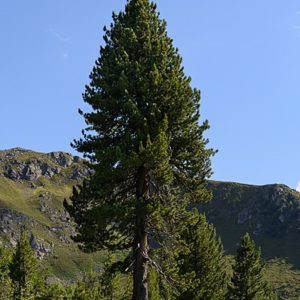
Arolloa / Swiss Pine Seed
Pinus cembra£10.00 – £25.00 inc. VATPinus cembra is a small slow growing tree with an almost columnar habit and purple-blue cones. The densely arranged dark blue green needles are blue-white on the inner surface and arranged in fives. It is resistant to white pine blister rust and is therefore being used to try and breed for resistance in other pines. The timber this tree produces is pale, soft and easy to work – ideal for wood turning.
Slices of the cone are used to flavour Schnapps
-
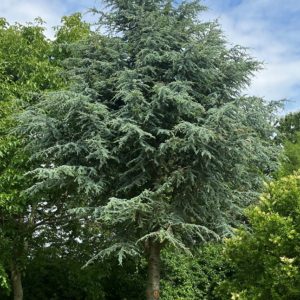
Atlas Cedar Seed
Cedrus atlantica£5.00 – £11.50 inc. VATThe Atlas Cedar is one of the most planted of the decorative conifers. Its long grey-green leaves cover the branches thickly. Branches become horizontal, but slightly drooping, with age. Useful for being heat and drought resistant. There used to be vast forests in Morocco and Algeria, but these are declining. A most famous tree is that planted on the lawn outside the White House in Washington D.C
Not for forestry purposes.
-
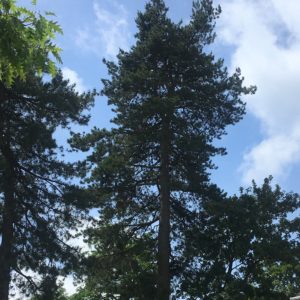
Austrian Pine Seed
Pinus nigra austriaca£5.00 – £12.00 inc. VATThe Austrian Pine is a commonly planted evergreen conifer with a dense head of large branches. The best suited of all the pines to chalky or lime rich soils, drought tolerant when established, though undoubtedly it grows better on rich, moist but well drained soils. The needles are dark green and in bundles of 2. Makes a good windbreak, especially in coastal areas.
Not for forestry purposes.
-
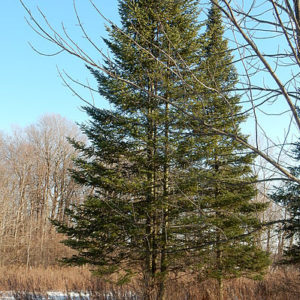
Balsam Fir Seed
Abies balsamea£5.00 – £7.00 inc. VATBalsam Fir is a medium sized tree with long leaves and a balsam scent. The cones are a purple / violet colour when young and tend to ooze sticky resin. Primarily grown for pulp and biomass. Balsam Fir oil is extracted for room fresheners, incense, cold remedies and rodent repellent. It is extremely hardy. There are many different varieties used for ornamental purposes, some of which are dwarf/slow growing and some with different coloured foliage.
-

Bhutan Pine Seed
Pinus excelsa/wallichiana£3.50 inc. VATThe Bhutan Pine in an elegant, large, broad headed tree with 20cm long drooping needles arranged in fives. The banana shaped cones are up to 25cm long. Highly ornamental and often grown in parks. Can be used as a source of high grade turpentine and is usefully tolerant of pollution, although in the wild it grows in the high valleys of the Himalayas and Afganistan.
-
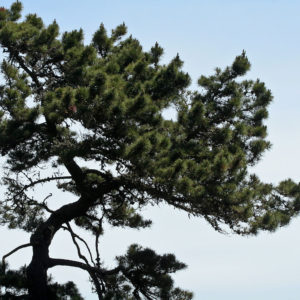
Bishop Pine Seed
Pinus muricata£2.00 – £7.99 inc. VATBishop Pine is a classic medium sized pine tree, quite fast growing, with a dense flat head of branches, related to Pinus radiata(Monterey Pine). Stiff, curved needles grow in pairs. The prickly cones can remain unopened on branches for years. Naturally grows West Coast USA, clinging to to sea cliffs, but has been trialled as a timber tree in Ireland, New Zealand and Australia. There are different forms, growing into different shapes depending on where the seed comes from – northern USA produces narrow conical shaped trees, more southerly trees tend to be domed.
Pic courtesy of Clairity at Flickr CC -BY -2.0
-
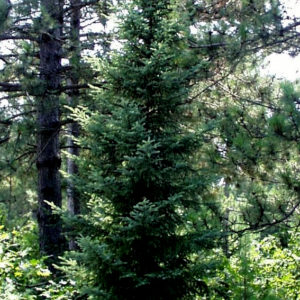
Black Spruce Seed
Picea mariana£5.00 – £14.50 inc. VATBlack Spruce is a medium sized tree with dark blue green leaves which are densely packed on the upper surfaces of the branchlets. Widespread across Canada, the timber is used for pulp and cross-laminated timber but also for mass produced chop-sticks or the fast food industry!
Pic courtesy of U.S Fish and Wildlife Service , public domain
-
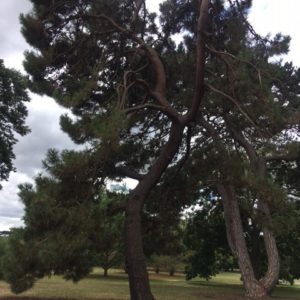
Bournemouth / Maritime Pine Seed
Pinus pinaster (maritima)£15.00 inc. VATThe Maritime Pine is a medium sized sparsely branched conifer with an orange-brown bark. It’s long robust needles grow in pairs. Cones are long and chunky and take a few years to ripen and release the winged seed. It is excellent on sandy soils and in seaside districts. Turpentine is produced from the resin and it is widely used for timber production round the Mediterranean.
Not for forestry purposes.
-
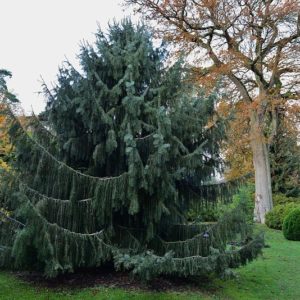
Brewers Weeping Spruce Seed
Picea breweriana£2.00 – £14.00 inc. VATBrewers Weeping Spruce is one the most beautiful of all the spruces. Graceful branchlets hang from long branches like slender tails and it produces purple cones.
-
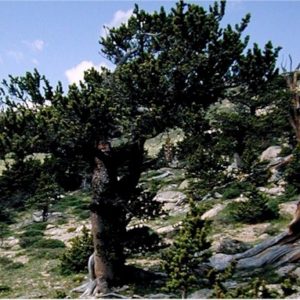
Bristlecone Pine Seed
Pinus aristata£5.50 inc. VATPinus aristata or Bristlecone Pine is a large shrub or small characterful tree with needles in groups of 5, flecked with white resin, looking like dandruff. This is how to tell it from the other Bristlcone pine, Pinus longaeva . It has slender bristle like cones. Some specimens in the wild are over 2500yrs old, it is very slow growing! The oldest trees are found in northern New Mexico, Arizona and in the Rockies at high elevations where the conditions are cold and dry.
-
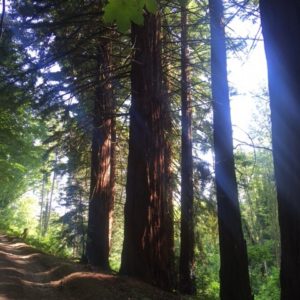
Californian Redwood Seed
Sequoia sempervirens£5.00 – £12.00 inc. VATThe Californian Redwood can reach over 100m tall in its native forests but mature specimens in gardens reach 30m. As well as being the worlds tallest it is also long lived with records of trees well over 2000 years old. The bark is deep and spongy and a good russet colour and resin from the tree can be used as a natural dye for wool.
-
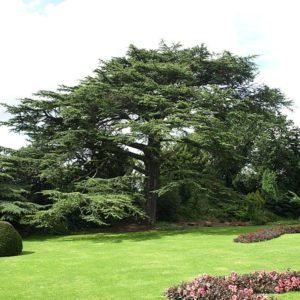
Cedar of Lebanon Seed
Cedrus libani£6.00 – £10.00 inc. VATLebanese Cedar is a huge wide-spreading, flat topped conifer, whose characteristic architectural growth habit forms a tiered arrangement. Young trees are conical but branches spread as the tree matures. Cedar of Lebanon has many historical associations. It is the national emblem of Lebanon, and on the Lebanese flag, although there are decreasing numbers growing in the wild. King Solomon is said to have used Cedar timber to build his temple. Cones are large and oval, taking 18 months to mature and then fall to pieces. The timber is prized for furniture making, being close-grained, a good colour and aromatic. Cedar oil extract is used in cosmetics.
Not for forestry purposes.
-
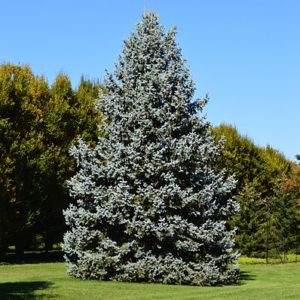
Colorado Blue Spruce Seed
Picea pungens glauca£5.00 – £18.00 inc. VATColorado Blue Spruce has needles leaves that tend to turn green with age; so those at the base of branches are green, resulting in an attractive variation of colour down the branch. It is architectural in form. If grown in a pot it is good for bringing into the house as a Christmas tree for a short while (cool room preferred!) Care free, since pruning would spoil it’s even shape.
-
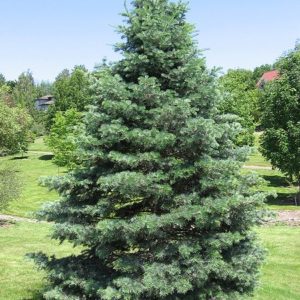
Colorado White Fir Seed
Abies concolor£5.00 – £11.00 inc. VATColorado White Fir is a widely grown conifer with grey needles up to 6cm long. It is a beautiful large tree with grey bark and long cylindrical cones. The wood it produces is soft and non resinous, with a good ability to hold nails(!?) which makes it an important timber tree.
-
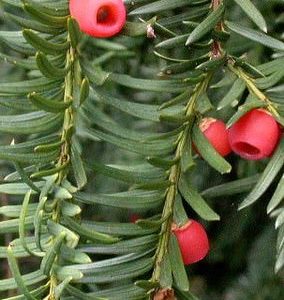
Common / English Yew Seed
Taxus baccata£5.00 inc. VATYew is a small to medium sized tree with fruits that are a bright red aril, which contrasts superbly with the dark green foliage. The fruit is eaten by birds but is poisonous to people. Yew is tolerant of most soils and is often found on chalk formations in the wild. Very ancient ones are found in Churchyards all over the country – it was once held in great esteem by Druids and mystics.
-

Corkbark Fir Seed
Abies lasiocarpa£5.00 – £12.50 inc. VATCork Bark Fir is a very ornamental conifer which is relatively rare in its native area. It has attractive densely arranged, blue-green needles. The bark on mature trees becomes deeply furrowed and corky. This tree is extremely hardy, growing near the tree-line in Arizona and New Mexico. It tolerates near alpine conditions, but is a real asset to a smaller garden since it is slow growing.
-
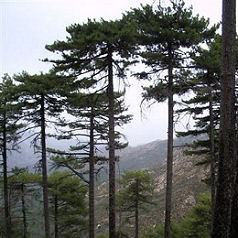
Corsican Pine Seed
Pinus nigra corsicana£8.00 – £20.00 inc. VATCorsican Pine(Pinus nigra) is a species especially suited as windbreaks, preferring well drained soils and it can also tolerate coastal conditions. It is a two needle pine, the needles often being slightly twisted. Pinus nigra are found, in variations, round the Mediterranean. In the UK it is used in preference to Scots pine as a timber tree, for building and for pulp.
Not for forestry purposes.
-
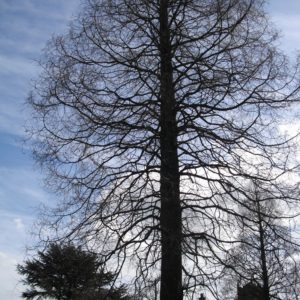
Dawn Redwood Seed
Metasequoia glyptostroboides£5.00 – £10.00 inc. VATThe Dawn Redwood, thought of as a ‘living fossil’, is a deciduous conifer, the leaves of which turn tawny pink and old gold in autumn. It is fast growing and makes quite a narrow conical tree with a shaggy bark that falls off in ribbons. The trunk itself tends to be broad at the bottom. It is widely planted as an ornamental tree but in the wild the population is decreasing. It is protected in China, but over-collection of seed from the wild has resulted in a lack of regeneration in its native areas. The first fossils of the tree were discovered in 1941, in China, and were aged at 150million years old!
-
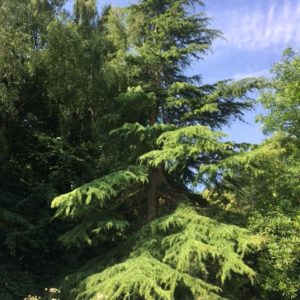
Deodar Cedar Seed
Cedrus deodara£5.50 inc. VATDeodar Cedar is a large conifer with a pendulous growth habit when young. It keeps a droopy leading shoot even on mature trees. Needle-like leaves, up to 5cm long, have a bluish bloom when young. Architectural, so makes a good specimen tree. The timber is rot resistant, close grained and aromatic and therefore historically used for storage rooms and boxes, having a certain amount of anti-fungal and insect repellent properties. Deodar forests were/are thought to be sacred to the God Shiva and used as places of meditation. It is the national tree of Pakistan.
-
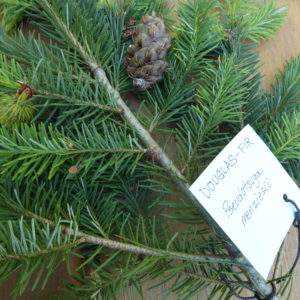
Douglas Fir Seed
Pseudotsuga menziesii / taxifolia£5.00 – £20.00 inc. VATDouglas Fir is regarded as the king of the Pacific coast forests. It is a fast growing, large conifer with down swept branches in mature specimens. It is an important import to Europe for timber production, but also an ornamental tree of value. Sometimes grown as a Christmas tree especially in USA, when it has to be trimmed to grow into a neat shape with dense branches. The fissured bark carries resinous blisters and the foliage also has a resinous scent.
Not for forestry purposes.
-
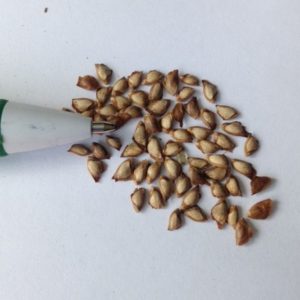
Dunkeld Larch Seed
Larix x eurolepsis£5.00 – £25.00 inc. VATThe Dunkeld Larch was found in Dunkeld, Perthshire, in about 1897. It is an intermediate between the parents (kaempferi x decidua) but with hybrid vigour. A similar hybrid was found at about the same time in Switzerland hence the two different latin names! It is a variable deciduous conifer which gives good yellow autumn colour, contrasting well with other forestry trees. New growth varies from pink to orange brown. Tough, hardy and resilient.
Not for forestry purposes.
-
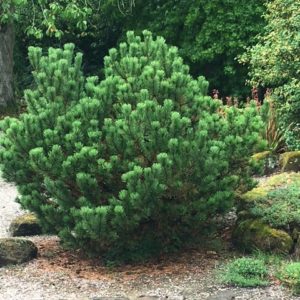
Dwarf Mountain Pine (Mughus) Seed
Pinus mugo mughus£5.00 – £17.00 inc. VATDwarf Mountain Pine is a shrubby conifer with dark green needles set in pairs. Mountain Pine succeeds on all well drained soils including chalk and limestone. A good evergreen addition to larger rock and scree gardens, adding form and winter interest.
-
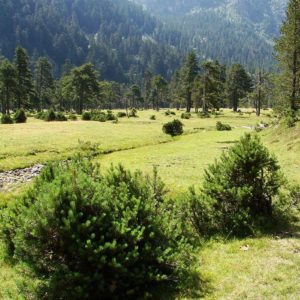
Dwarf Mountain Pine Seed
Pinus uncinata rotundata£2.50 – £13.50 inc. VATAlso known as Pinus mugo uncinata or P. mugo rotundata, some confusion exists about this Mountain Pine! Found infrequently on high wet moors and survives in frost pockets. Grows to a wide pyramidal conifer with a strong leader. It is useful for large scale rock gardens.


Sign up to receive great news and offers